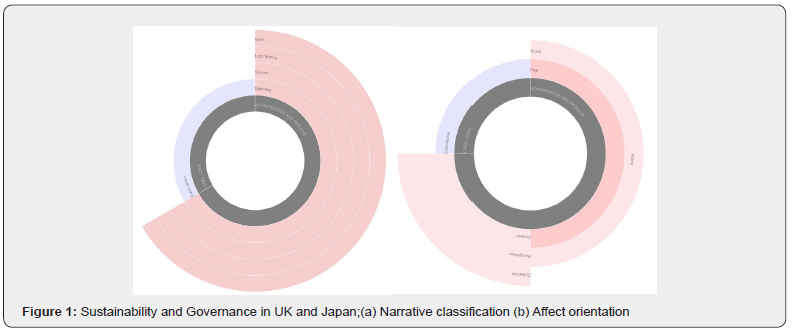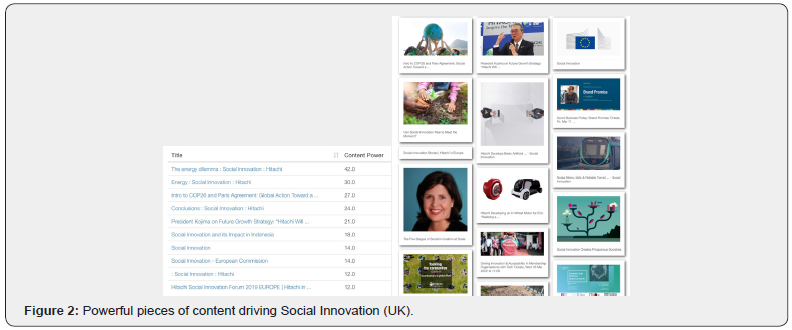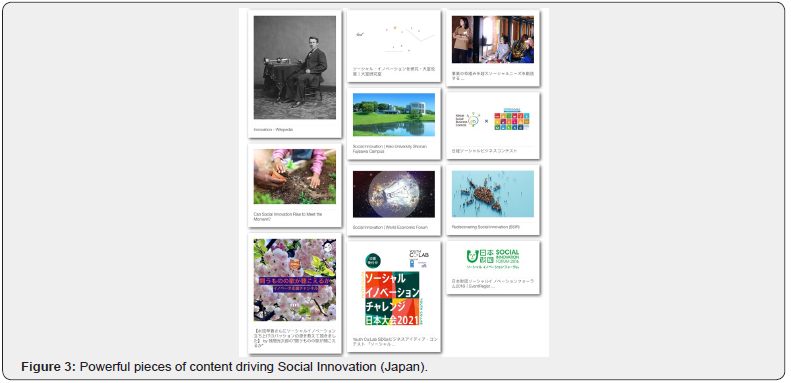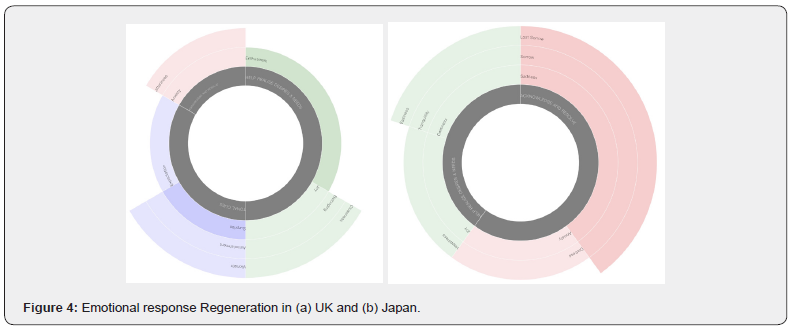Social Innovation and Regeneration
Chris D Beaumont1*, Darrell Berry2 and John Ricketts3
1 Institute for Future Initiatives, LifeStylebyDesign, The University of Tokyo, Japan
2 Significance Systems, Brighton, UK
2 Significance Systems, Sydney NSW 2069, Australia
Submission: May 31, 2022; Published: June 17, 2022
*Corresponding author: Chris D Beaumont, Institute for Future Initiatives, LifeStylebyDesign, The University of Tokyo, 7-3-1 Hongo, Bunkyo-ku, Tokyo 113-0033, Japan
How to cite this article: Chris D Beaumont, Darrell Berry, John Ricketts. Politics. Int J Environ Sci Nat Res. 2022; 30(3): 556288. 10.19080/IJESNR.2022.30.556288
Keywords: Narratives; Utility; Social sharing; Engagement; Behaviour; People; Big data; AI; Important; Emotional response; Improved decisions; Life satisfaction; Regeneration; Innovation; Social entrepreneurism; Multi-disciplinary
Context
The questioning of countries differing responses to the COVID-19 pandemic [1] has led to a plethora of social innovation initiatives aimed at improving the ability to meet the future, systemic needs of a changing society and project a responsible and caring corporate culture. Economic development and growth are key elements of social innovation and are not at odds with creating, more intangible, social value. That said, the pandemic has led to fundamental questioning of the status-quo, with the realization that many things were in fact broken and there was a need to reset. This is seen as especially relevant to life satisfaction, well-being and whether we can be happy [2]. The necessity for many to work from home brought the realisation that the historical fixation on GDP, was a focus on something that measures absolutely nothing that is important in peoples’ lives. Going forward this will no doubt lead to a greater attention and commitment to ‘measure what we treasure’.
The path out of the pandemic was viewed as unclear and precarious before the Russian invasion of Ukraine, which has rapidly increased basic living costs and inflation, driven by energy and food constraints, and the frailties of the global supply chain laid bare by the pandemic. Our two countries of focus are not immune to the impact. Japan is extremely vulnerable to global energy shifts since over 90% of its primary energy needs are imported. In the UK, the global volatile situation has been compounded by economic failures and political inconsistencies in the Brexit agreement coming quickly to light.
For both countries, albeit for different reasons, there is a natural short-termism at odds with the accepted need to coherently address long-term climate and development goals. Sustainability can be described as ‘improve today without harming tomorrow’ whereas regenerative is ‘improve today and tomorrow’, which fits with the timescales we have. Human activity since the Industrial Revolution has put growing pressure on our planet, leading to environmental degradation. As awareness of these challenges spread, we now seek to learn from earth’s living systems and look to a regenerative future.
Social Innovation and Regeneration
Social Innovation in the UK is a timeless narrative. The affect orientation is active but negative, projecting disgust and polarizing opinion. Although such narratives have the power to grow, to maximise long term power, they must transform from that current destructive and oppositional stance to project positivity and creativity. It is evident in the emotion response while dominated by negativity there are expectations, for change.
In both countries the emotional response (Figure 1) to social innovation has some expectation but is otherwise negative. In the UK grief creates an overall sense of sadness, while in Japan the negative feeling of likely change is much stronger with a sense of defeatism and resignation fuelling despair.In the UK, energy is at the heart of the Social Innovation narrative as one might expect following COP26. In analysing what are the most important content pieces driving engagement with narrative, Hitachi features strongly (Figure 2). Their Social Innovation initiative has self-evidently created an intrinsic momentum that can help drive market performance. The key topics driving the narrative reflect the global opportunity, the importance of the role of business, new forms of energy and consumption. All of which will have a fundamental impact on society move to net zero. That said, it does seem that social innovation is not the language of change for people in the UK.
In both countries the emotional response (Figure 1) to social innovation has some expectation but is otherwise negative. In the UK grief creates an overall sense of sadness, while in Japan the negative feeling of likely change is much stronger with a sense of defeatism and resignation fuelling despair.




In the UK, energy is at the heart of the Social Innovation narrative as one might expect following COP26. In analysing what are the most important content pieces driving engagement with narrative, Hitachi features strongly (Figure 2). Their Social Innovation initiative has self-evidently created an intrinsic momentum that can help drive market performance. The key topics driving the narrative reflect the global opportunity, the importance of the role of business, new forms of energy and consumption. All of which will have a fundamental impact on society move to net zero. That said, it does seem that social innovation is not the language of change for people in the UK.
In the UK, regeneration is timeless with an affect that is active and positive creating a sense of delight and expectation. The focus is personal concerned with the process and cell function, which can dynamically improve the body, and is not seen form a societal perspective.
In Japan, regeneration is also timeless with an emotional affect that is positive and active. Here the focus is on the communicationformat. Music is viewed positively, while video is currently viewed rather negatively. Significantly neither are currently materially associated with the language of social change. At the present regeneration has no societal attachment [3].
Implications
While some social commentators are talking up the notion of regeneration in the context of social innovation [4], this analysis shows that it is not yet in the vernacular. Moreover, we have found that currently social innovation is not grounded in community endeavours but rather in corporate infrastructure improvements. Moreover, regeneration is still embryonic and only currently seen by a minority as a different spin on sustainability. Since regeneration is a timeless narrative, while there is a disconnect there is also a tangible opportunity. We have seen how important (local) community activities can create community value by helping to ground the resilience and stoic response to COVID-19. Going forward, self-evidently for leaders, language will be critical to develop engagement and the emotional connection that precedes action.
References
- Gelfand MJ, Jackson JC, Pan X, Nau D, Pieper D, et al. (2021) The relationship between cultural tightness–looseness and COVID-19 cases and deaths: a global analysis. Lancet Planet Health 5(3): e135-e144.
- Layard R (2020) Can we be happier? Evidence and ethics, Pelican Books.
- Toyota’s Woven City.
- Warden J (2021) Regenerative Futures: from sustaining to thriving together, RSA.






























